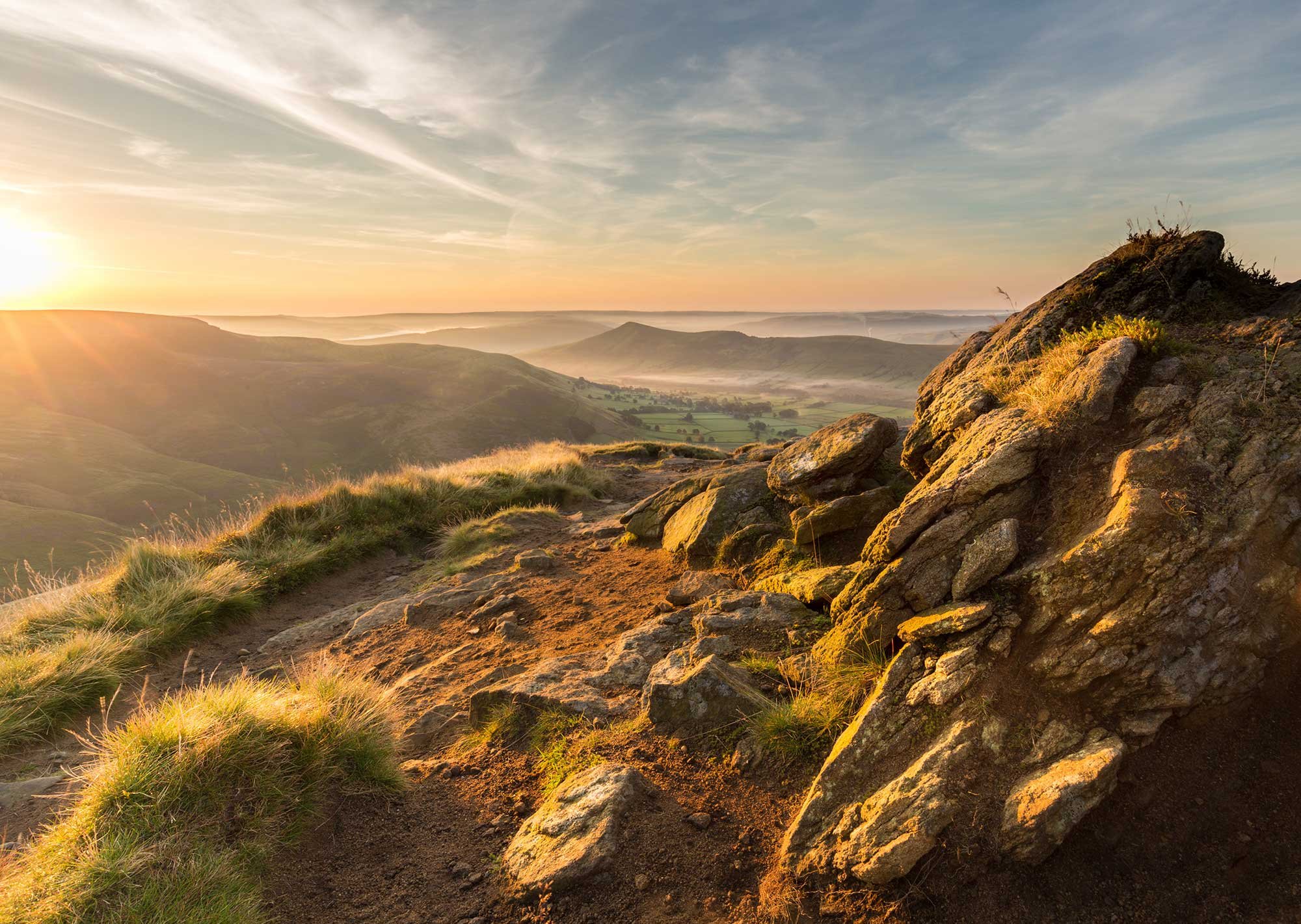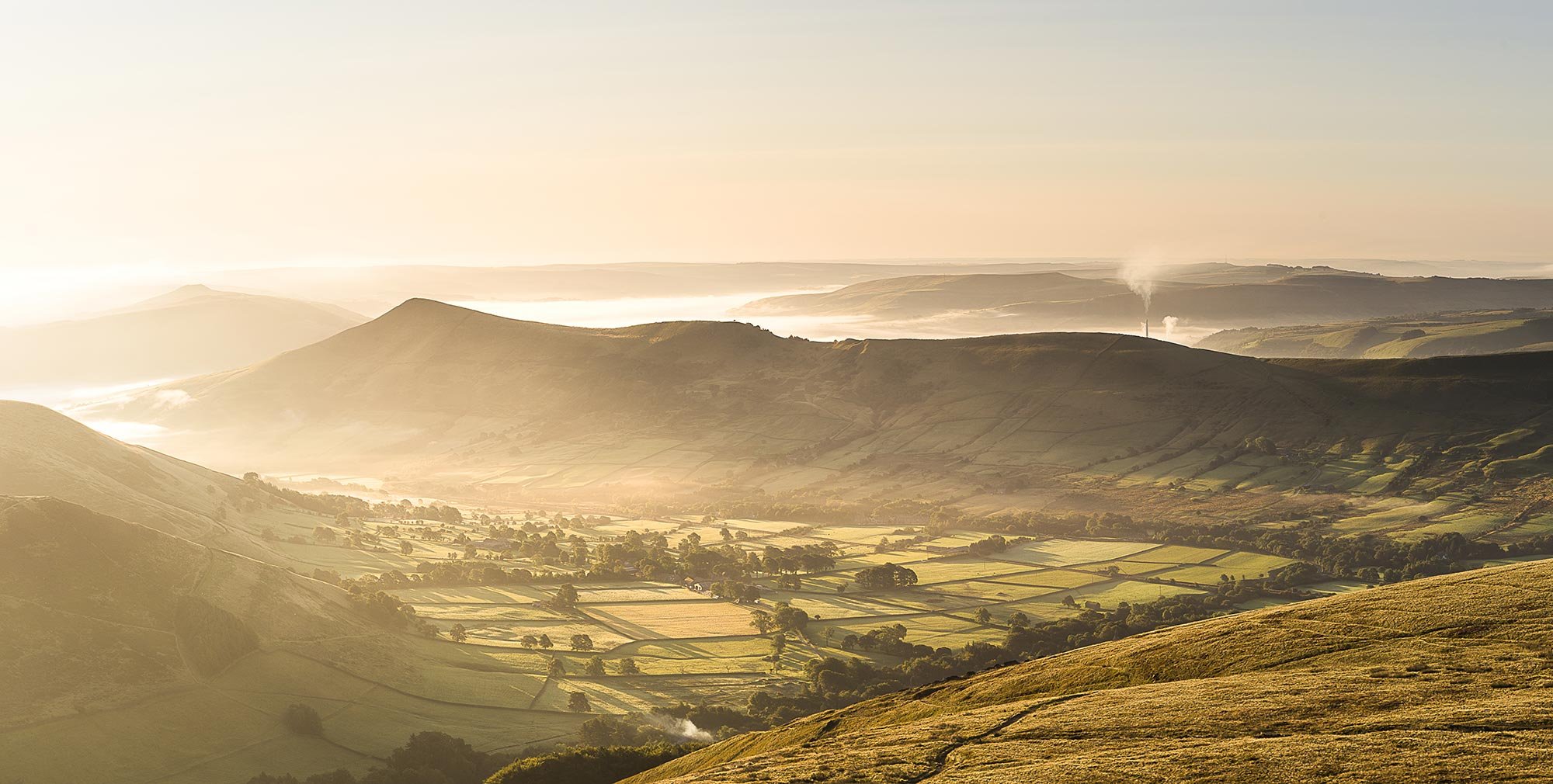The Charm and Challenges of Living in Edale
Nestled in the heart of the Peak District, Edale is a picturesque village that offers a sense of tranquility, a tight-knit community, and a deep connection to nature. Known for its stunning landscapes and as the starting point of the Pennine Way, Edale attracts thousands of tourists each year. While tourism brings economic benefits and vibrancy to the village, it also introduces several challenges for the residents. This article explores the unique charm of Edale and delves into the complexities and difficulties that tourism brings to this idyllic village.
The Allure of Edale
Edale's appeal lies in its breathtaking scenery, peaceful environment, and opportunities for outdoor activities. The village is surrounded by rolling hills, rugged moorlands, and scenic valleys, making it a paradise for hikers, cyclists, and nature lovers. The Pennine Way, which begins in Edale, draws adventurers from around the world eager to tackle this iconic long-distance footpath.
In addition to its natural beauty, Edale boasts a rich cultural heritage, charming stone cottages, and welcoming local businesses, including quaint cafes and traditional pubs. These elements combine to create an enchanting atmosphere that captivates both residents and visitors.
Tourism: A Double-Edged Sword
Tourism is a significant part of Edale’s economy, providing essential income for local businesses and supporting jobs. However, the influx of visitors, particularly during peak seasons, presents several challenges that impact the village's infrastructure, environment, and community dynamics.
Strain on Infrastructure
1. Limited Access to Amenities: The surge in tourist numbers can overwhelm Edale’s limited amenities. The village has a small number of shops (1), cafes (2), and services, which can become crowded, making it difficult for residents to access daily necessities. During peak tourist seasons, locals may find themselves competing with visitors for basic goods and services.
2. Public Transportation: Edale’s remote location means public transportation options are sparse. The village has a railway station, but the frequency of services can be limited. Increased tourism can strain this infrastructure, leading to overcrowded trains and limited seating availability for residents.
3. Road Conditions and Parking: The narrow, winding roads leading to Edale can become congested with the influx of tourist vehicles. Parking is often limited, and visitors may park on verges or in inappropriate spots, causing damage and inconvenience to residents. This increased traffic can also lead to wear and tear on the roads, requiring more frequent maintenance.
Environmental Impact
4. Footpath Erosion: The natural beauty of Edale attracts numerous hikers and walkers, but this heavy foot traffic can lead to soil erosion and damage to the trails. Popular routes, such as the Pennine Way, can become worn and require regular maintenance to prevent further degradation.
5. Litter and Waste Management: An increase in visitors often results in more litter and waste. Despite the best efforts of local authorities and volunteers, managing the additional waste can be challenging. Litter not only mars the scenic beauty of the village but can also harm local wildlife.
6. Wildlife Disturbance: The presence of large numbers of tourists can disturb local wildlife. Animals may be driven away from their natural habitats, and nesting sites can be disrupted. This impact is particularly noticeable during sensitive periods such as breeding seasons.
Social and Cultural Challenges
7. Social Opportunities and Community Dynamics: While tourism can bring vibrancy to Edale, it can also disrupt the close-knit community dynamics. The influx of visitors can lead to a transient population during peak seasons, making it challenging for residents to maintain a strong sense of community. Additionally, local events and gatherings may be overshadowed by the sheer volume of tourists.
8. Privacy: In a small village like Edale, privacy can be hard to come by. The influx of tourists means that locals often find their personal spaces and routines disrupted. The constant presence of visitors can make it difficult for residents to enjoy the solitude and peace that attracted them to Edale in the first place.
9. Resistance to Change: Edale’s strong sense of tradition can sometimes clash with the demands of modern tourism. Efforts to accommodate tourists, such as developing new amenities or infrastructure, may face resistance from locals who wish to preserve the village’s historical character and way of life.
Economic and Employment Considerations
10. Seasonal Employment: Jobs in Edale are often seasonal, leading to periods of high employment during the peak tourist seasons and reduced opportunities during the off-season. This can create financial instability for those who rely on tourism for their livelihood.
11. Housing Market Pressure: The popularity of Edale as a tourist destination can drive up property prices and rental rates. This can make it difficult for local residents, particularly younger people and families, to afford housing. Additionally, the prevalence of holiday homes and short-term rentals can reduce the availability of permanent housing for residents.
Addressing the Challenges
While the challenges of tourism in Edale are significant, they are not insurmountable. Several strategies help mitigate the negative impacts and ensure that tourism benefits both residents and visitors.
1. Sustainable Tourism Practices: Promoting sustainable tourism practices is essential for preserving Edale’s natural beauty and community integrity. This includes encouraging visitors to follow designated trails, take their litter home, and respect wildlife and local customs.
2. Infrastructure Improvements: Investment in infrastructure improvements, such as better parking facilities, improved public transportation, and enhanced waste management systems, all help alleviate some of the pressures caused by tourism.
3. Community Engagement: Involving the local community in tourism planning and decision-making processes ensures that their needs and concerns are addressed. Creating opportunities for residents to benefit directly from tourism, such as through local business support and employment opportunities, can foster a positive relationship between locals and visitors.
4. Visitor Education: Educating visitors about the importance of respecting the environment and local culture can help minimise the negative impacts of tourism. Providing information through signage, brochures, and online resources can raise awareness and promote responsible behavior.
Conclusion
Edale’s charm and natural beauty make it a beloved destination for tourists, but this influx of visitors also presents several challenges for the village. By adopting sustainable tourism practices, investing in infrastructure, engaging the community, and educating visitors, Edale can continue to thrive as a picturesque and welcoming village. Balancing the benefits of tourism with the need to preserve the environment and maintain a strong community is essential for ensuring that Edale remains a cherished destination for generations to come.




